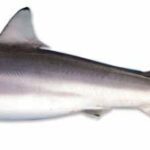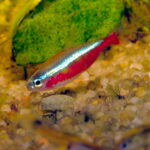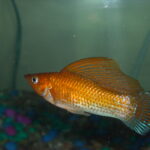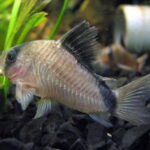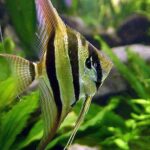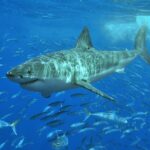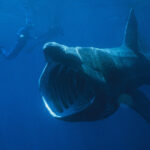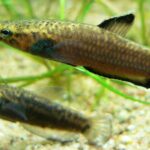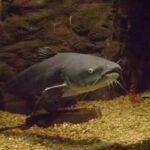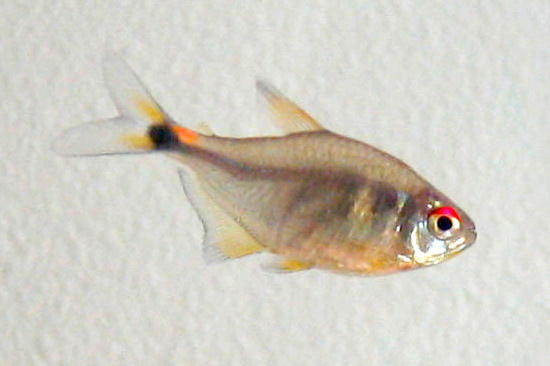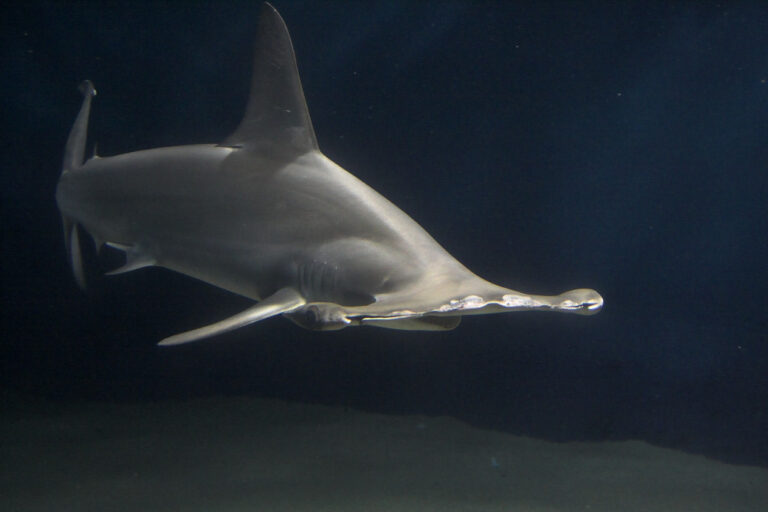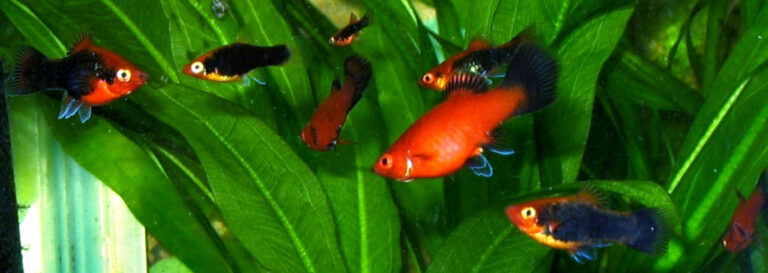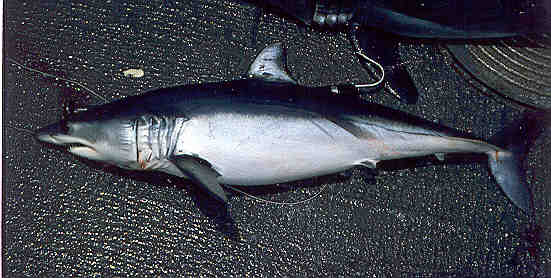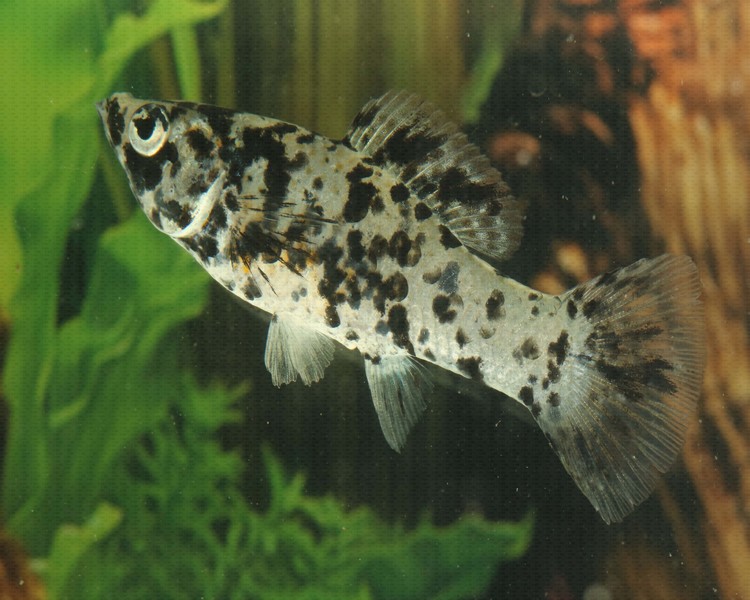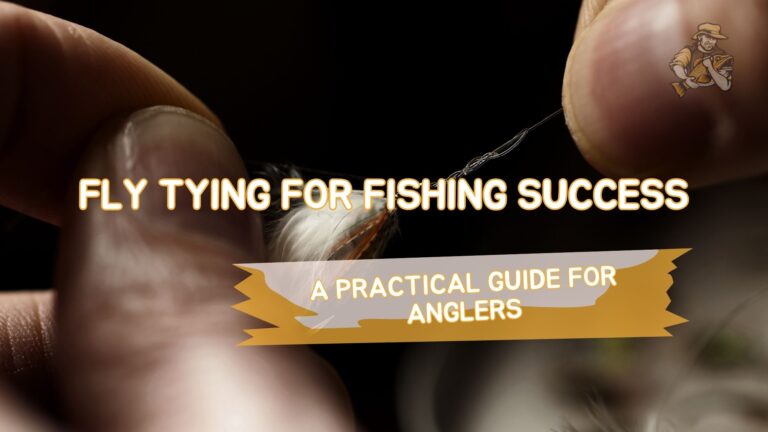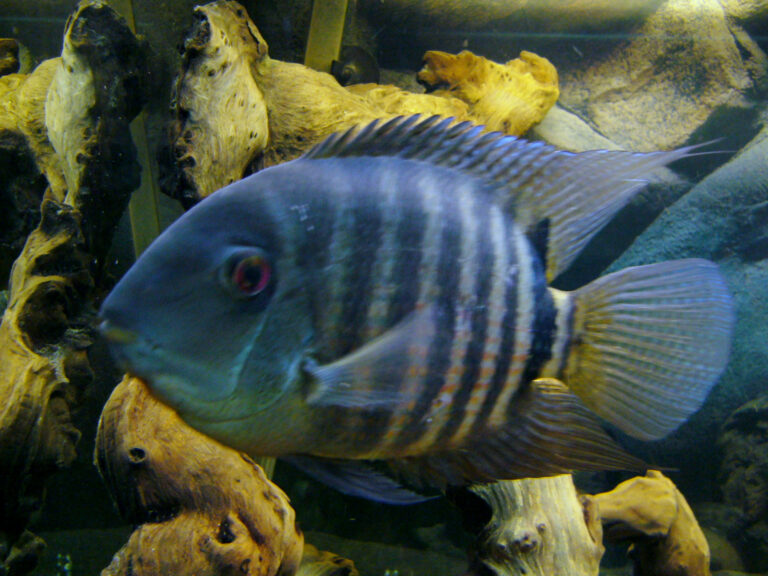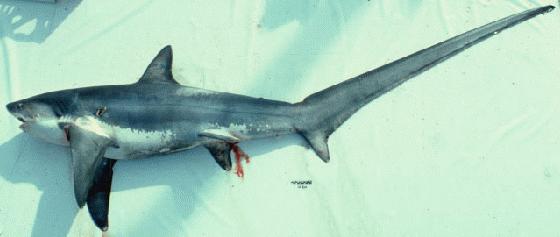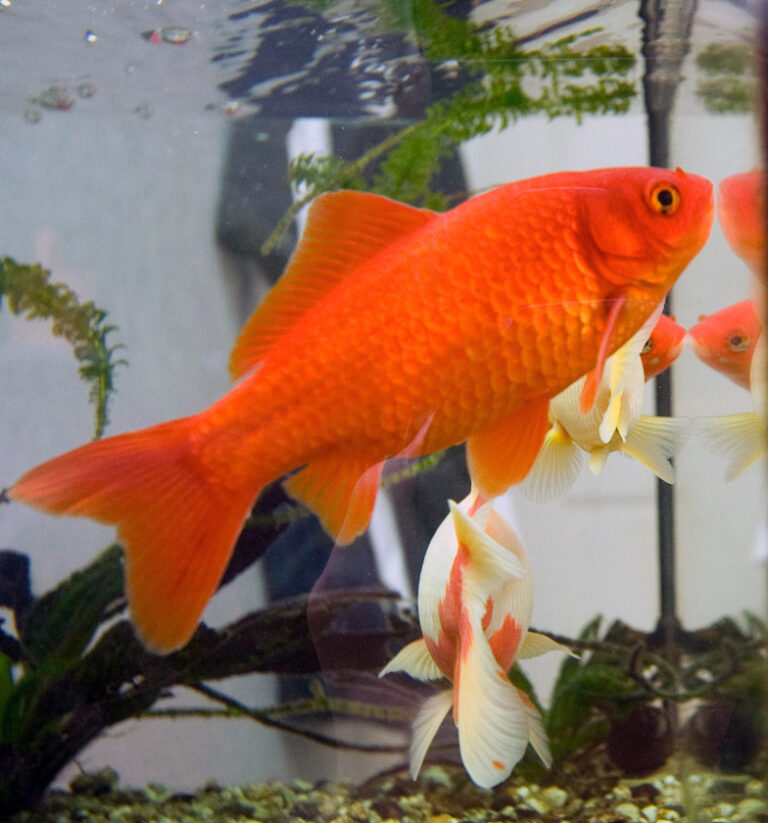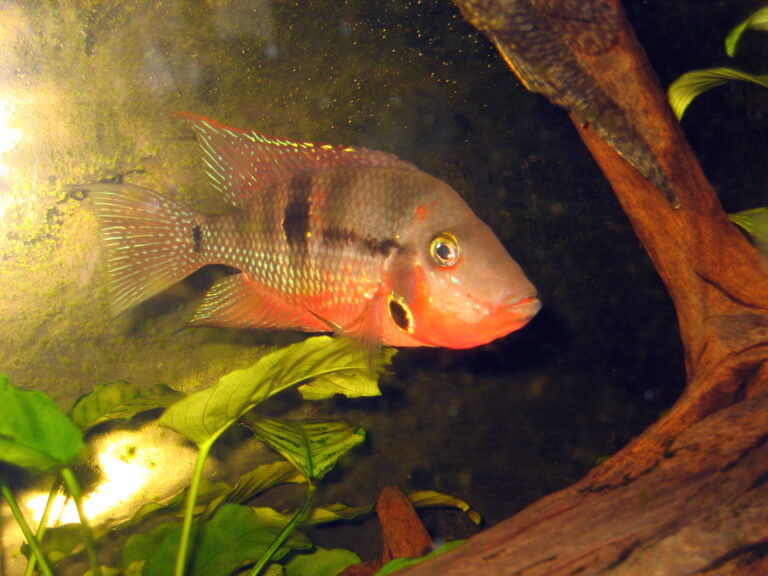Dalmatian Molly
By Ryan Maron | Last Modified: June 12, 2025

The Dalmatian Molly stands as one of the most recognizable and beloved freshwater aquarium fish, distinguished by its striking black-spotted pattern reminiscent of the famous dog breed. Known scientifically as Poecilia latipinna, this captivating variety represents a selectively bred color morph of the sailfin molly, showcasing the remarkable diversity achievable through careful aquaculture practices. The Dalmatian Molly plays a crucial ecological role as both a primary consumer and prey species within freshwater ecosystems, while simultaneously serving as an important indicator species for water quality assessment in natural habitats.
These hardy livebearers have become cornerstone species in the global aquarium trade, contributing significantly to both educational and commercial aquaculture sectors. Their adaptability to varying water conditions and peaceful temperament make them ideal candidates for community aquariums, while their prolific breeding habits provide valuable insights into reproductive biology and population dynamics. The Dalmatian Molly’s tolerance for brackish conditions also positions it as a bridge species between freshwater and marine aquarium systems.
| Feature | Details |
|---|---|
| Common Name | Dalmatian Molly |
| Scientific Name | Poecilia latipinna |
| Family | Poeciliidae |
| Typical Size | 7-12 cm (3-5 inches), 15-30 grams |
| Habitat | Freshwater and brackish environments |
| Diet | Omnivorous – algae, insects, plant matter |
| Distribution | Native to southeastern United States, Caribbean |
| Conservation Status | Least Concern |
Taxonomy & Classification
The Dalmatian Molly belongs to the family Poeciliidae, a diverse group of livebearing freshwater fish commonly known as poeciliids. Within this family, the genus Poecilia encompasses approximately 40 species, with P. latipinna serving as the foundational species for numerous ornamental varieties. The taxonomic classification places the Dalmatian Molly within the order Cyprinodontiformes, which includes killifish, pupfish, and other small freshwater species adapted to variable salinity conditions.
Genetic analysis reveals that the distinctive spotted pattern results from selective breeding programs targeting specific melanophore distribution patterns. The Dalmatian variety represents a polygenic trait involving multiple gene loci that control pigment cell development and distribution. Research conducted by ichthyologists has identified at least seven distinct genetic markers associated with the spotted phenotype, demonstrating the complex inheritance patterns underlying this popular aquarium strain.
The species exhibits significant morphological plasticity, with wild-type P. latipinna displaying considerable variation in fin size, body depth, and coloration patterns. Captive breeding programs have amplified these natural variations, producing not only the Dalmatian pattern but also balloon varieties, lyretail forms, and numerous color morphs including gold, silver, and black variants.
Physical Description
The Dalmatian Molly presents a distinctive appearance characterized by a pristine white or silver base coloration adorned with irregular black spots distributed across the body and fins. These spots typically measure 2-4 millimeters in diameter and exhibit random distribution patterns, creating the characteristic dalmatian-like appearance that gives this variety its common name. The spot density varies considerably between individuals, with some specimens displaying sparse spotting while others feature dense concentrations of melanophores.
Adult males typically reach lengths of 7-10 centimeters, while females grow slightly larger at 8-12 centimeters. Sexual dimorphism becomes apparent as fish mature, with males developing a modified anal fin called a gonopodium used for internal fertilization. The dorsal fin in males often displays enhanced size and coloration, particularly in sailfin varieties where the fin can extend significantly beyond the body outline.
Body morphology follows the typical molly configuration with a laterally compressed profile, slightly upturned mouth, and moderately forked caudal fin. The head comprises approximately 25% of the total body length, housing relatively large eyes adapted for surface feeding behaviors. Fin ray counts typically include 8-10 dorsal rays, 8-9 anal rays, and 13-15 caudal rays, though selective breeding has produced variations in these standard counts.
The integumentary system features overlapping cycloid scales arranged in regular patterns, with scale counts averaging 26-28 along the lateral line. Specialized chromatophores contain the pigments responsible for the spotted pattern, with melanophores producing the characteristic black spots and iridophores contributing to the metallic sheen observed in quality specimens.
Habitat & Distribution
The natural range of Poecilia latipinna extends throughout the southeastern United States, from North Carolina to Florida and westward along the Gulf Coast to Texas. Native populations inhabit diverse aquatic environments including freshwater streams, brackish marshes, coastal lagoons, and estuarine systems where salinity levels fluctuate with tidal cycles. This broad salinity tolerance, ranging from 0 to 15 parts per thousand, demonstrates the species’ remarkable physiological adaptability.
Wild Dalmatian Mollies prefer shallow, vegetated waters with moderate current flow and abundant organic debris. Optimal habitat conditions include water temperatures between 22-28°C, pH levels ranging from 7.0-8.5, and dissolved oxygen concentrations above 5 mg/L. These fish demonstrate strong associations with emergent and submerged vegetation, utilizing plant communities for foraging, shelter, and reproductive activities.
Human introductions have established populations throughout the Caribbean, Central America, and various tropical regions worldwide. In Florida’s Everglades ecosystem, mollies serve as important prey species for larger predators including largemouth bass, supporting complex food web dynamics. The species’ ability to colonize diverse habitats has led to its classification as a successful invasive species in several regions, though ecological impacts remain relatively minimal compared to other introduced fish species.
Microhabitat preferences include areas with soft substrates rich in detritus and algal growth. Water depth preferences typically range from 10-60 centimeters, though individuals may venture into deeper waters during seasonal migrations or when pursuing food resources. The species exhibits remarkable tolerance for environmental fluctuations, surviving temporary exposure to extreme temperatures and salinity variations that would prove lethal to less adaptable species.
Diet & Feeding Behavior
The Dalmatian Molly exhibits omnivorous feeding behavior with a strong preference for plant-based materials and small invertebrates. Natural diet composition includes filamentous algae, diatoms, detritus, small crustaceans, insect larvae, and organic particulates suspended in the water column. Stomach content analysis reveals that algae and plant matter typically comprise 60-70% of total food intake, with animal protein sources accounting for the remaining portion.
Feeding strategies demonstrate both opportunistic and specialized behaviors adapted to exploiting diverse food resources. Surface feeding activities target floating organic matter, including pollen, small insects, and plant fragments. Benthic foraging involves systematic searching through substrate materials to locate buried invertebrates and organic detritus. The slightly upturned mouth orientation facilitates efficient surface feeding while maintaining the ability to capture mid-water prey items.
Digestive morphology reflects the omnivorous feeding strategy, with an elongated intestinal tract measuring approximately 2.5 times the body length. This extended digestive system enables efficient processing of plant materials requiring extended breakdown periods. Pharyngeal teeth exhibit grinding adaptations suitable for processing both plant and animal tissues, while the stomach maintains moderate acidity levels optimal for protein digestion.
Daily feeding patterns typically involve multiple foraging sessions distributed throughout daylight hours, with peak activity occurring during morning and late afternoon periods. Individual fish may consume 3-5% of their body weight daily, though metabolic demands vary with water temperature, reproductive status, and food availability. Similar feeding behaviors can be observed in other molly fish varieties, demonstrating consistent dietary preferences across the species complex.
Behavior & Adaptations
Dalmatian Mollies display complex social behaviors characterized by loose schooling tendencies and hierarchical interactions within group structures. Social organization typically involves groups of 6-12 individuals, with dominant males establishing territories around preferred feeding sites or potential spawning areas. Subordinate individuals maintain positions within the school while avoiding direct confrontation with dominant fish through submissive posturing and spatial separation.
Locomotor behavior demonstrates remarkable versatility, with individuals capable of rapid acceleration when threatened and sustained swimming during foraging activities. Swimming patterns include both horizontal movements through the water column and vertical migrations following food resources or environmental gradients. The species exhibits positive phototaxis, showing attraction to illuminated areas where algal growth and prey concentrations typically increase.
Physiological adaptations enable survival across diverse environmental conditions, particularly regarding salinity tolerance and temperature fluctuations. Specialized gill structures facilitate efficient osmoregulation, allowing rapid adjustment to changing salinity levels through active ion transport mechanisms. Heat shock proteins provide cellular protection during temperature stress, while behavioral thermoregulation involves seeking optimal thermal microhabitats.
Communication behaviors include visual displays, chemical signaling, and tactile interactions during courtship and territorial disputes. Males perform elaborate courtship displays featuring fin extension, body vibration, and pursuit behaviors designed to attract female attention. Aggressive interactions typically involve lateral displays, fin spreading, and occasional physical contact, though serious injuries remain uncommon due to well-developed conflict resolution mechanisms.
Predator avoidance strategies combine cryptic coloration, rapid escape responses, and group cohesion behaviors. When threatened, individuals may seek shelter among vegetation, form tight aggregations, or perform erratic swimming patterns to confuse predators. The spotted coloration pattern may provide disruptive camouflage against dappled backgrounds common in vegetated aquatic environments.
Reproduction & Life Cycle
The Dalmatian Molly employs internal fertilization and live birth, characteristics that define the family Poeciliidae. Reproductive maturity occurs between 3-4 months of age, corresponding to body lengths of approximately 4-5 centimeters. Sexual dimorphism becomes pronounced during maturation, with males developing the gonopodium and enhanced fin coloration while females develop broader abdominal regions to accommodate developing embryos.
Mating behavior involves complex courtship rituals initiated by territorial males. Courtship displays include sigmoid body posturing, fin extension, and vibration behaviors designed to attract female attention and demonstrate male fitness. Successful copulation results in internal sperm storage within specialized female reproductive structures, enabling multiple broods from a single mating event.
Gestation periods typically range from 28-35 days, influenced by water temperature, nutrition, and individual genetic factors. Brood sizes vary considerably based on female size and condition, with young females producing 10-20 offspring while mature females may deliver 40-60 fry per reproductive cycle. Newborn fry measure approximately 6-8 millimeters in length and demonstrate immediate swimming ability and independent feeding behavior.
Parental care remains minimal, with adults showing little interest in offspring protection beyond the gestation period. Fry survival depends primarily on habitat complexity, food availability, and predation pressure. Growth rates average 1-2 millimeters per week during optimal conditions, with individuals reaching adult size within 6-8 months. The reproductive strategy mirrors that found in guppy populations, emphasizing quantity over individual offspring investment.
Life expectancy in natural conditions typically ranges from 2-3 years, though captive specimens may survive 4-5 years under optimal care conditions. Reproductive output generally peaks during the second year of life, with females capable of producing 6-8 broods annually under favorable environmental conditions.
Predators & Threats
Natural predators of the Dalmatian Molly include a diverse array of aquatic and semi-aquatic species occupying higher trophic levels within freshwater and brackish ecosystems. Primary predators consist of larger fish species such as largemouth bass, snook, gar, and various cichlid species that utilize mollies as a significant protein source. Avian predators including herons, egrets, and kingfishers pose considerable threats to individuals occupying shallow water habitats, particularly during feeding activities near the surface.
Invertebrate predators target different life stages, with dragonfly nymphs, water beetles, and predaceous diving beetles preying upon juvenile and adult mollies. Crayfish and larger freshwater shrimp species may capture mollies during nighttime foraging activities, while parasitic organisms including trematodes, cestodes, and copepods impose additional survival challenges through physiological stress and reduced fitness.
Environmental threats encompass habitat modification, pollution, and climate change impacts affecting natural populations. Urban development frequently results in habitat fragmentation, altered hydrology, and increased runoff containing agricultural chemicals and urban pollutants. Temperature fluctuations associated with climate change may push populations beyond their thermal tolerance limits, particularly in marginal habitats near the species’ range boundaries.
Invasive species interactions create additional competitive pressures and predation risks in non-native habitats. Introduced predators may lack co-evolutionary relationships with molly populations, potentially resulting in unsustainable predation pressure. Conversely, mollies themselves may impact native species through competition for resources or hybridization with closely related native poeciliids.
Disease outbreaks pose significant threats to dense populations, particularly in aquaculture settings where rapid transmission occurs. Common pathogenic organisms include Ichthyophthirius multifiliis, Saprolegnia species, and various bacterial pathogens that exploit stressed or immunocompromised individuals. Water quality degradation often exacerbates disease susceptibility, creating cascading effects on population stability.
Conservation Status
The International Union for Conservation of Nature (IUCN) currently classifies Poecilia latipinna as Least Concern, reflecting stable population trends and broad distribution patterns throughout its native range. This conservation status acknowledges the species’ adaptability, reproductive success, and minimal immediate extinction risk under current environmental conditions. However, localized population declines have been documented in specific watersheds experiencing intensive development pressure or habitat modification.
Population monitoring efforts conducted by state wildlife agencies indicate generally stable abundance levels across most of the species’ range, though some isolated populations show evidence of genetic bottlenecks or reduced genetic diversity. These localized concerns primarily affect populations in highly modified urban watersheds where habitat connectivity has been severely compromised through channelization and water control structures.
The species’ success in the global aquarium trade provides additional conservation insurance through extensive captive breeding programs maintaining genetic diversity. Commercial breeding operations and hobbyist communities collectively maintain thousands of breeding lines, preserving genetic material that could potentially support population restoration efforts if needed. This ex-situ conservation approach demonstrates the value of sustainable aquaculture practices in biodiversity preservation.
Research priorities focus on understanding climate change impacts, invasive species interactions, and habitat restoration effectiveness. Long-term monitoring programs track population responses to environmental changes, providing early warning systems for conservation interventions. Collaborative efforts between academic institutions, government agencies, and private organizations support comprehensive conservation strategies addressing both immediate threats and long-term sustainability challenges.
Habitat protection initiatives emphasize wetland preservation, water quality improvement, and riparian zone restoration within the species’ native range. These ecosystem-based approaches provide benefits for entire biological communities while specifically addressing molly habitat requirements. The conservation success of this species demonstrates the effectiveness of integrated management strategies combining habitat protection, population monitoring, and sustainable utilization practices.
Human Interaction
The Dalmatian Molly occupies a prominent position in the global aquarium trade, representing one of the most popular and widely distributed ornamental fish species worldwide. Commercial breeding operations produce millions of specimens annually, supporting a multi-billion dollar industry that provides livelihoods for countless individuals involved in breeding, distribution, and retail sales. The species’ hardy nature and attractive appearance make it an ideal choice for beginning aquarists, contributing to its sustained market demand.
Educational applications extend beyond recreational fishkeeping to include scientific research, classroom demonstrations, and public aquarium displays. The species’ reproductive biology, behavior, and physiology provide excellent models for studying fundamental biological principles including genetics, development, and ecological adaptation. University biology programs frequently utilize mollies in laboratory exercises exploring topics such as population dynamics, selective breeding, and environmental physiology.
Cultural significance varies across different regions, with the species appearing in folklore, art, and recreational activities throughout its native range. In some Caribbean cultures, mollies feature in traditional fishing practices and local ecological knowledge systems that recognize their importance as indicator species for environmental health. The distinctive spotted pattern has inspired artistic representations and cultural symbols celebrating natural diversity and beauty.
Economic impacts encompass both positive contributions through the aquarium trade and potential costs associated with invasive population management. The global trade in Dalmatian Mollies generates substantial revenue for exporting countries, particularly in Southeast Asia and Central America where large-scale breeding facilities operate. However, escaped or released specimens may establish populations requiring management interventions to protect native ecosystems.
Recreational fishing occasionally targets wild molly populations, though their small size limits their appeal compared to larger game fish species. Some anglers appreciate mollies as forage species that support populations of more desirable sport fish, recognizing their ecological importance in maintaining healthy aquatic food webs. This perspective highlights the interconnected nature of aquatic ecosystems and the value of preserving native species diversity.
Research applications continue expanding as molecular techniques reveal new insights into molly biology, evolution, and ecological relationships. The species serves as a model organism for studies investigating topics such as sexual selection, behavioral ecology, and adaptive radiation. These research contributions enhance our understanding of fundamental biological processes while providing practical applications for aquaculture and conservation management.
Interesting Facts
The Dalmatian Molly possesses remarkable salinity tolerance, capable of surviving in water ranging from completely fresh to nearly marine conditions with salinity levels approaching 25 parts per thousand. This extraordinary physiological flexibility allows individuals to colonize diverse habitats unavailable to most freshwater fish species, contributing to their ecological success and aquarium popularity.
Genetic research has revealed that the spotted pattern inheritance follows complex polygenic mechanisms involving at least seven distinct gene loci. This genetic complexity enables breeders to produce consistent spotted patterns while maintaining the potential for developing new variations through selective breeding programs. Some breeding lines exhibit over 95% pattern consistency across multiple generations, demonstrating the effectiveness of modern aquaculture techniques.
Female Dalmatian Mollies can store sperm for extended periods, enabling them to produce multiple broods from a single mating event. This reproductive strategy, known as sperm storage, allows females to maintain reproductive output even when separated from males for several months. The stored sperm remains viable for up to six months, providing significant adaptive advantages in environments where mate availability fluctuates seasonally.
The species exhibits unusual behavioral responses to magnetic fields, showing directional orientation abilities that may assist in navigation and habitat selection. Laboratory studies have documented consistent directional preferences when exposed to artificial magnetic fields, suggesting the presence of magnetoreceptive capabilities similar to those found in migratory fish species. This sensory ability may contribute to their success in colonizing new habitats.
Dalmatian Mollies demonstrate remarkable learning abilities, including the capacity to recognize individual tankmates and remember feeding schedules. Behavioral studies have shown that individuals can distinguish between different caretakers and anticipate feeding times with remarkable accuracy. Some specimens have been trained to respond to simple visual and auditory cues, highlighting their cognitive capabilities.
The spotted coloration pattern continues developing throughout the fish’s lifetime, with new spots appearing and existing spots changing size or intensity as individuals age. This dynamic pigmentation pattern results from ongoing melanophore activity and provides a unique identification system for researchers studying individual fish in long-term behavioral studies. The pattern development process offers insights into cellular differentiation and pigment cell biology that have applications beyond fish biology.
Temperature-dependent color expression affects spot intensity and distribution, with cooler temperatures typically producing more pronounced spotting patterns. This phenotypic plasticity allows the same genetic individual to display different appearances under varying environmental conditions, demonstrating the complex interactions between genetics and environment in determining final phenotype. Similar color variations occur in platy fish breeding programs, reflecting shared evolutionary adaptations within the Poeciliidae family.
Frequently Asked Questions
How long do Dalmatian Mollies typically live in captivity?
Dalmatian Mollies generally live 3-5 years in well-maintained aquarium environments, with optimal care potentially extending their lifespan to 6 years. Factors affecting longevity include water quality, diet quality, tank size, and stress levels. Providing stable water parameters, varied nutrition, and appropriate tank mates significantly contributes to maximizing their lifespan in captive environments.
Can Dalmatian Mollies survive in saltwater aquariums?
Dalmatian Mollies can adapt to low-salinity marine conditions with specific gravity up to 1.015, making them suitable for brackish aquarium systems. However, they cannot survive in full-strength seawater and require gradual acclimation when transitioning between different salinity levels. Their natural salinity tolerance makes them excellent candidates for brackish community tanks with appropriate tank mates.
What water temperature range is optimal for Dalmatian Mollies?
The optimal temperature range for Dalmatian Mollies spans 24-26°C (75-79°F), though they can tolerate temperatures between 18-30°C (64-86°F) for short periods. Maintaining stable temperatures within the optimal range promotes healthy growth, reproduction, and immune function. Temperature fluctuations should be minimized to prevent stress-related health issues and behavioral changes.
How can you distinguish male from female Dalmatian Mollies?
Male Dalmatian Mollies develop a pointed anal fin called a gonopodium used for reproduction, while females retain the fan-shaped anal fin structure. Males typically display more intense coloration, larger dorsal fins, and more streamlined body shapes. Females grow larger overall and develop broader abdominal regions, particularly when carrying developing fry. These differences become apparent around 3-4 months of age.
Conclusion
The Dalmatian Molly represents a remarkable example of successful selective breeding combined with natural adaptability, creating a species that bridges the gap between wild ecological function and human cultural appreciation. Its role as both an important prey species in natural ecosystems and a beloved aquarium inhabitant demonstrates the complex relationships between biodiversity conservation and sustainable utilization. The species’ continued success in both natural and artificial environments provides valuable insights into adaptive strategies that enable survival in an increasingly human-modified world, while its educational and commercial value highlights the importance of maintaining healthy populations for future generations.
Share The Article:
More Fish Species:
-
Head and Tail Light Tetra
The Head and Tail Light Tetra (*Hemigrammus ocellifer*) stands as one of South America’s most distinctive characin species, instantly…
-
Hammerhead Shark
The Hammerhead Shark represents one of the most distinctive and fascinating apex predators in marine ecosystems worldwide. These remarkable…
-
Tuxedo Platy
The Tuxedo Platy (Xiphophorus maculatus) stands as one of the most recognizable and beloved freshwater aquarium fish species, distinguished…
-
Bubble Eye Goldfish
The Bubble Eye Goldfish stands as one of the most distinctive and recognizable varieties of ornamental goldfish, captivating aquarists…
-
Shortfin Mako Shark
The Shortfin Mako Shark stands as one of the ocean’s most remarkable predators, combining exceptional speed with sophisticated hunting…
-
Marble Molly
The Marble Molly (*Poecilia latipinna*) stands as one of the most recognizable and widely distributed ornamental fish species in…
Discover
-
Pensacola Fishing Tides Decoded: Fish More, Catch More
Look, I’ve spent the better part of my fishing life getting absolutely schooled by Pensacola’s tides. Just last month,…
-
How to Find Good Fishing Spots That Actually Produce Fish
Finding productive fishing spots is often what separates successful anglers from those who go home empty-handed. It’s not just…
-
Best Fishing Lures for Walleye: Pro Secrets You Won’t Believe
Let me tell you something about walleye fishing that most anglers get completely wrong. After 30+ years of chasing…
-
Fly Tying for Fishing Success: A Practical Guide for Anglers
There’s something deeply satisfying about catching a fish on a fly you’ve tied with your own hands. I still…
-
Crappie Fishing Guide for Beginners | 2025
Crappie fishing might just be one of the most rewarding experiences for new anglers. These popular panfish are abundant,…
-
7 Best Fly Fishing Rods for Beginners in 2025 (Tested by a Pro)
Ask any fly angler what their most important piece of gear is, and most will point to their rod….
Discover
-
Severum Cichlid
The Severum Cichlid represents one of South America’s most recognizable and ecologically significant freshwater fish species. Known scientifically as…
-
How to Fish for Wahoo: 5 Proven Tactics from a Pro Angler
If there’s one fish that’s made me question my sanity over the years, it’s the wahoo. These lightning-fast predators…
-
Thresher Shark
The Thresher Shark represents one of the ocean’s most distinctive and captivating apex predators, renowned for its extraordinarily elongated…
-
Telescope Goldfish
The Telescope Goldfish (Carassius auratus) represents one of the most distinctive and recognizable varieties of fancy goldfish in the…
-
Firemouth Cichlid
The Firemouth Cichlid (*Thorichthys meeki*) stands as one of Central America’s most recognizable freshwater fish species, distinguished by its…
-
Pearl Gourami
The Pearl Gourami stands as one of the most recognizable and ecologically significant members of the labyrinth fish family,…

